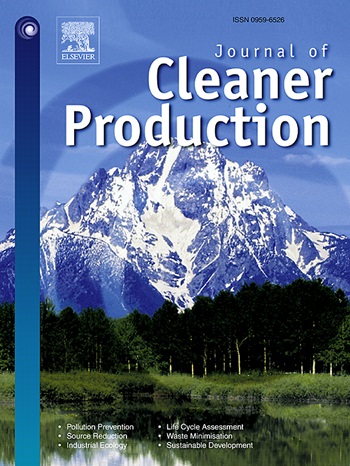The effects of blending diisopropanolamine and 2-amino-2-methyl-1-propanol for carbon dioxide capture process: Comparative study using thermodynamic modeling and artificial neural network predictions
IF 9.7
1区 环境科学与生态学
Q1 ENGINEERING, ENVIRONMENTAL
引用次数: 0
Abstract
Amine-based absorption processes represents a promising strategy for CO2 capture. This study systematically examined the CO2 solubility, absorption behaviors, and regeneration energy (Qregen) of aqueous blended-amine solutions of diisopropanolamine (DIPA) and 2-amino-2-methyl-1-propanol (AMP) solutions. CO2 solubility was experimentally measured across five blending ratios (30:0:70 to 0:30:70 (w/w)), four temperatures of (313–383 K), and CO2 partial pressure up to 450 kPa. The data were well-correlated with both the electrolyte non-random two-liquid (e-NRTL) thermodynamic model and the artificial neural network (ANN) model. The model-physical alignment score was suggested as a novel metric to ensure consistency with fundamental absorption behaviors. While the thermodynamic model provided mechanistic insights, the ANN model offered a simpler, computationally efficient approach. Both models successfully generalized with a reduced dataset, reinforcing their applicability in absorbent screening. AMP exhibited superior CO2 solubility, whereas DIPA offered benefits of lower pH and reduced heat of absorption. The absorption behavior of aqueous blended-amine solutions was characterized by prioritized AMPH+ formation, leading to an AMP-dominated system at low CO2 loading ratios. The analysis of Qregen, including sensible, reaction, and latent heats, revealed that the lowest Qregen was achieved from the single AMP system. The addition of 5 wt% DIPA resulted in only an 8% increase in Qregen, still achieving a 33.4% reduction compared to MEA. These findings highlight aqueous DIPA-AMP solutions as energy-efficient and chemically stable absorbents.

基于胺的吸收过程是一种前景广阔的二氧化碳捕集策略。本研究系统地考察了二异丙醇胺(DIPA)和 2-氨基-2-甲基-1-丙醇(AMP)混合胺水溶液的二氧化碳溶解度、吸收行为和再生能量(Qregen)。二氧化碳溶解度是在五种混合比例(30:0:70 至 0:30:70(w/w))、四种温度(313-383 K)和最高 450 kPa 的二氧化碳分压下进行实验测量的。数据与电解质非随机双液(e-NRTL)热力学模型和人工神经网络(ANN)模型都有很好的相关性。建议将模型-物理一致性得分作为一种新的衡量标准,以确保与基本吸收行为的一致性。热力学模型提供了机理见解,而人工神经网络模型则提供了一种更简单、计算效率更高的方法。这两个模型都成功地在数据集减少的情况下实现了泛化,从而加强了它们在吸收剂筛选中的适用性。AMP 表现出优异的二氧化碳溶解性,而 DIPA 则具有较低的 pH 值和较低的吸收热。混合胺水溶液的吸收行为以 AMPH+ 的优先形成为特征,从而导致在低二氧化碳负载率下形成以 AMP 为主导的体系。对 Qregen(包括显热、反应热和潜热)的分析表明,单一 AMP 系统的 Qregen 最低。与 MEA 相比,添加 5 wt% 的 DIPA 只使 Qregen 增加了 8%,但仍减少了 33.4%。这些研究结果突出表明,DIPA-AMP 水溶液是一种节能且化学性质稳定的吸收剂。
本文章由计算机程序翻译,如有差异,请以英文原文为准。
求助全文
约1分钟内获得全文
求助全文
来源期刊

Journal of Cleaner Production
环境科学-工程:环境
CiteScore
20.40
自引率
9.00%
发文量
4720
审稿时长
111 days
期刊介绍:
The Journal of Cleaner Production is an international, transdisciplinary journal that addresses and discusses theoretical and practical Cleaner Production, Environmental, and Sustainability issues. It aims to help societies become more sustainable by focusing on the concept of 'Cleaner Production', which aims at preventing waste production and increasing efficiencies in energy, water, resources, and human capital use. The journal serves as a platform for corporations, governments, education institutions, regions, and societies to engage in discussions and research related to Cleaner Production, environmental, and sustainability practices.
 求助内容:
求助内容: 应助结果提醒方式:
应助结果提醒方式:


